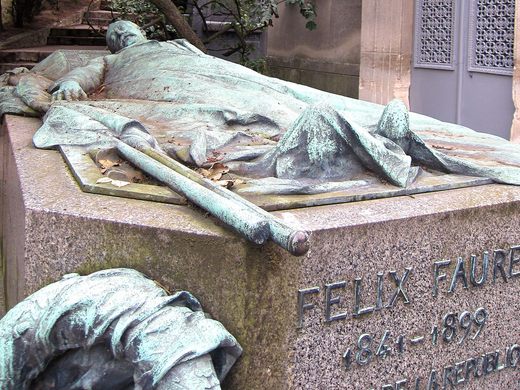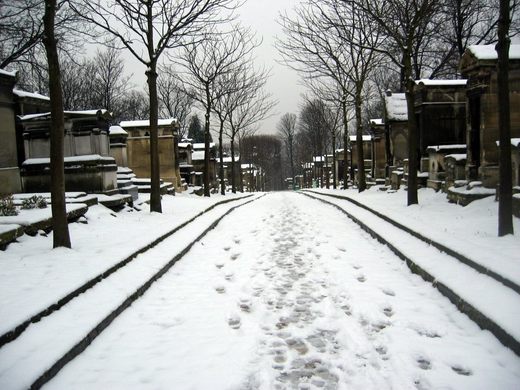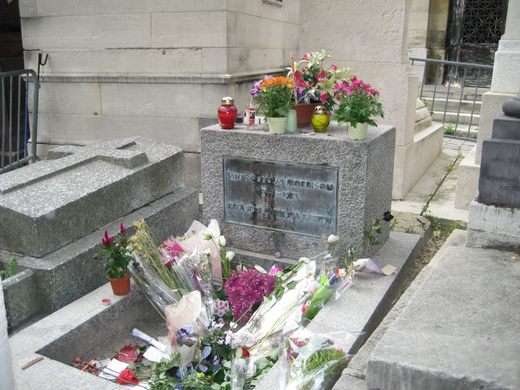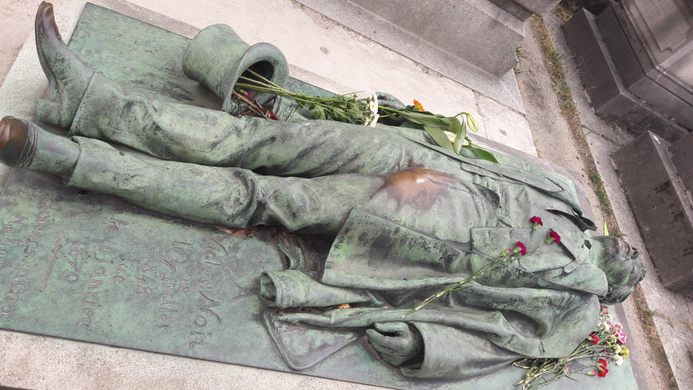Cimetière du Père-Lachaise
Paris's largest cemetery, home to famous graves and art
Paris's largest cemetery, home to famous graves and art


































































































75020 Paris, France Get directions

"Paris's largest cemetery, known for its famous graves and garden-like setting." - Lane Nieset Lane Nieset Lane Nieset is a travel writer from Miami who has lived in France for the past decade. From Paris, she covers a mix of lifestyle, wine, food, and design for publications including Food & Wine, Condé N

"If visiting a cemetery sounds morbid and dreary, rest assured: It is, but in the best possible way. Death is an inescapable part of French life, and the layers on layers of Parisian history on display at Père Lachaise Cemetery are a fascinating peek into how the city has evolved over time. Visitors flock to the A-list graves here, with Oscar Wilde, Edith Piaf, and Jim Morrison among the most-visited. But one of the great delights is to walk away from the crowds and get lost wandering among the lesser-known, less-visited ones, which are all in various states of repair. Some have been completely worn down with obscurity over time; others appear to be washed and adorned with fresh flowers on a weekly basis. Keep your eyes peeled, and you might find some other noteworthy names buried here, from composer Frédéric Chopin to writer Marcel Proust and painter Eugène Delacroix." - Melissa Liebling-Goldberg, Julia Eskins


"First of all, it’s not creepy. An oasis of peace in Charonne, the tombs of La Cimetière du Père-Lachaise bear the names of major figures in literature, theatre, and music. It is both the largest park and the largest cemetery with open spaces in Paris. For a moment, you'll feel like you've left the city entirely." - Violaine & Jérémy

"Rather fittingly for this up-and-coming arts enclave, Hotel Scarlett is housed inside an industrial building that was previously abandoned for years. Now it’s a 30 room boutique hotel that’s filled with artwork and furnishings made of recycled materials – check out the reception desk, built of repurposed wooden shipping crates – and bathed in the glow of lamplight from rows of antique-inspired fixtures suspended from the ceiling." - The MICHELIN Guide

"European funeral art has given many artists the opportunity to explore their own style by experimenting with the idea of an everlasting memorial. What image should remain as an eternal monument linking the absence of a human being and the sorrow of their family? In his photographic journey “Erotique du Cimetiere”, contemporary artist and funeral art specialist Andre Chabot offers a wonderful reflection on how voluptuous female nude statues became the ultimate symbol of mourning, appeasing our wounded souls through the sensuality of their curves. But if femininity is a common motif in French cemeteries, the grave of Victor Noir and the incongruous folklore that surounds its effigy offers new possibilities in the Eros equation. Victor Noir, a 19th-century political journalist, is one of those people who will be better remembered in death than in life. Shot in a duel by Prince Pierre Bonaparte in 1870, he became a symbol of the imperial injustice and a martyr for the Republic. More than one hundred thousand people came to his funeral, where frenetic weeping was mixed with calls for insurrection. After the downfall of the Second Empire, Victor Noir’s remains were transferred to the Pere Lachaise Cemetery, and a bronze effigy was commissioned to the sculptor Jules Dalou in praise of his memory. Noir was depicted as an elegant man, lying dead on the floor after the impact of the lethal bullet, his top hat tipped over on his side. Dalou chose to represent Noir in a very realistic way, his face having the detailed quality of a cast death mask. However, another detail of Noir’s anatomy would soon get more attention than the sober realism of the memorial bronze. The dead Victor, in his eternal sleep, bears an under-belt bump that a lot of his living fellows would be jealous of. Victor Noir is nowadays one of the most visited residents in the graveyard, right after Jim Morrison and Allan Kardec. His popularity is not because of his talent as a journalist, nor his symbolic role, but lies in the notorious lump in his pants. A generation of superstitious (or just randy) women have decided that taking indecent rubbings of Victor’s impressive girth could prevent infertility, and perform these rubbings in more than the traditional manner. After a century of daily joyrides (even burlesque dancer Dita Von Teese had a go) Victor Noir’s lips and groin are shiny and nickel-clean, while the rest of his body presents the greenish tone of oxidized bronze. In 2004, when a fence was erected around Victor Noir’s tomb to deter fertility-seekers from carnally touching the statue, women were so offended that a few noisy protests were staged in the cemetery, enough to have the fence torn down." - ATLAS_OBSCURA
